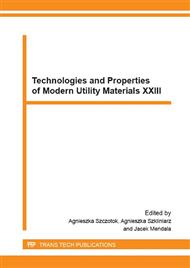p.201
p.207
p.213
p.217
p.221
p.225
p.231
p.235
p.240
The Deformability of Fe-Ni Superalloy during High Temperature Deformation
Abstract:
The influence of initial soaking and parameters of plastic deformation on the deformability of A-286 superalloy have been presented. The hot-torsion tests were executed at constant strain rates of 0.1 and 1.0 s-1, at testing temperatures in the range 900-1150°C and were conducted until total fracture of the samples. Plastic properties of the alloy were characterized by worked out flow curves and the temperature relationships of flow stresses and strain limits. Activation energy for hot working Q was assessed for the alloy after two variants of previous heating, i.e. 1100°C/2 h and 1150°C/2 h.
Info:
Periodical:
Pages:
221-224
Citation:
Online since:
February 2016
Authors:
Keywords:
Price:
Сopyright:
© 2016 Trans Tech Publications Ltd. All Rights Reserved
Share:
Citation:


